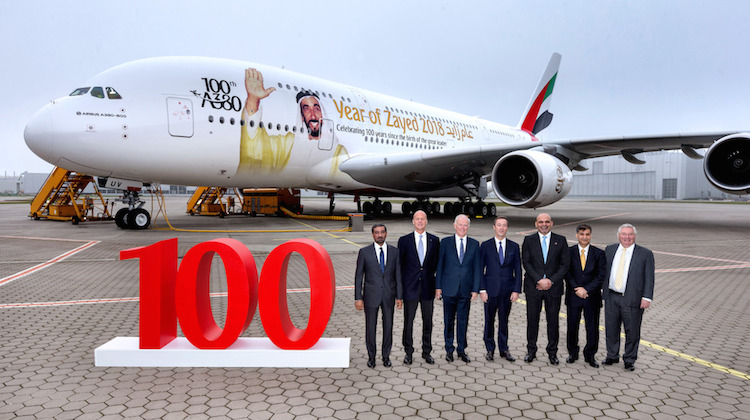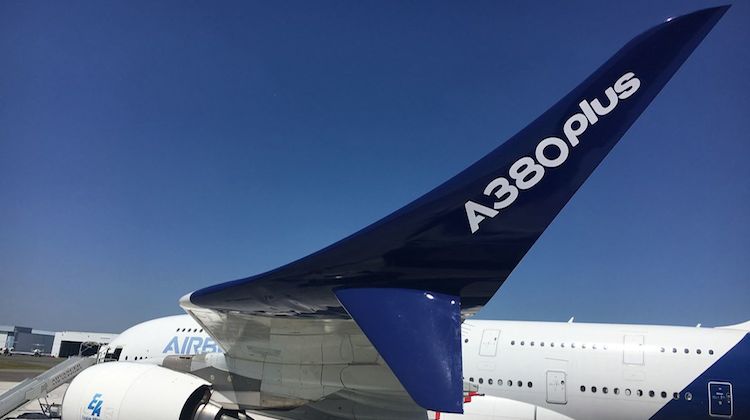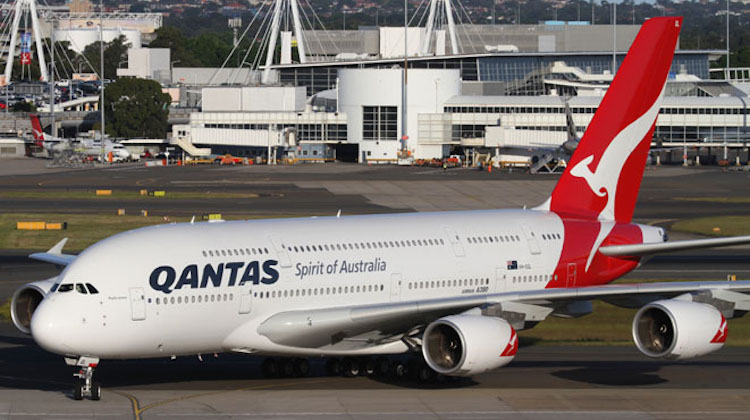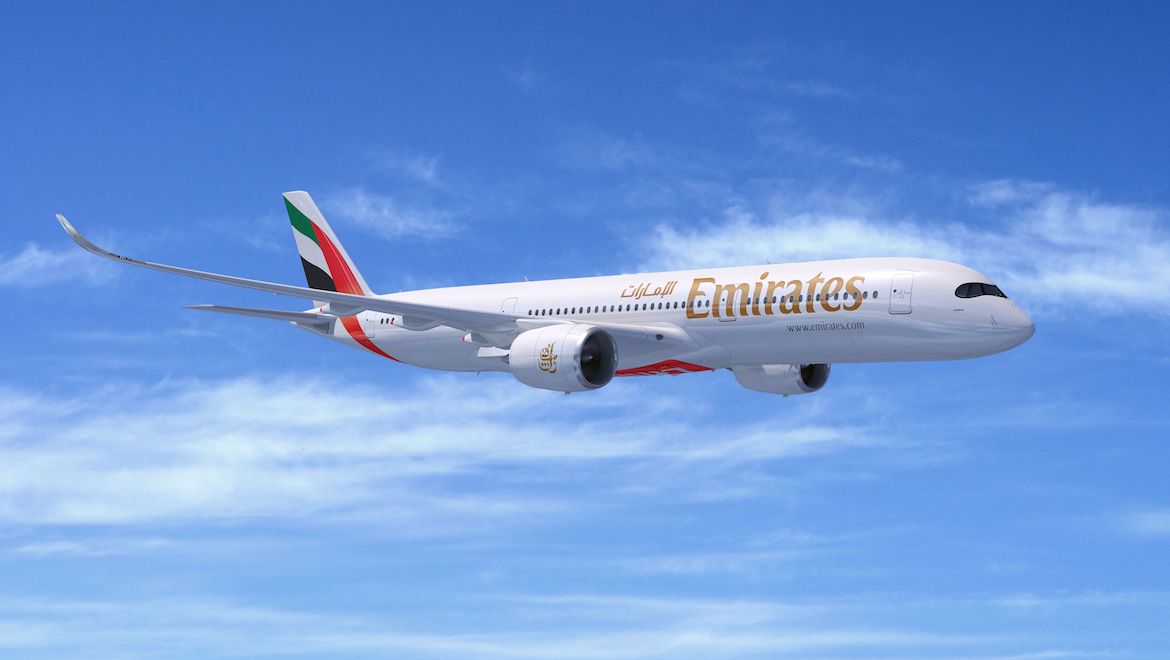Airbus chief executive Tom Enders says the decision to end production of the A380 in 2021 is a painful one for everyone involved in the program.
The aerospace giant confirmed on Thursday the A380 production line will close amid a lack of orders and after Emirates choosing to cut back on the number of double decker superjumbos it has on order and instead go for the A350 and A330neo.
“As a result of this decision we have no substantial A380 backlog and hence no basis to sustain production, despite all our sales efforts with other airlines in recent years,” Enders said in a statement.
“This leads to the end of A380 deliveries in 2021.
“Today’s announcement is painful for us and the A380 communities worldwide.”
Enders described the A380 as an “outstanding engineering and industrial achievement” that passengers around the world have come to love to fly.
However, Airbus’ hand was forced after Emirates chose not to firm up an memorandum of understanding (MoU) signed in January 2018 that comprised orders for 20 A380s and options for 16 more of the type.
The inability to convert the MoU to a firm order was because Emirates’ discussions with Rolls-Royce could not reach an agreement on the supply of engines for those aircraft.
Instead, Emirates, which received its first A380 in 2008, said it would take up just 14 more A380s between now and 2021, taking its total order book to 123 aircraft.
Emirates chief executive Sheikh Ahmed bin Saeed Al Maktoum said the airline was “disappointed to have to give up our order” and “sad” the program could not be sustained.
“We accept that this is the reality of the situation,” Al Maktoum said in a statement.
Al Maktoum said the A380 would continue to fly in the Emirates fleet “well into the 2030s”.
“And as we have always done, Emirates will continue to invest in our onboard product and services so our customers can be assured that the Emirates A380 experience will always be top-notch,” Al Maktoum said.
Rolls-Royce said it would provide Emirates with Trent 900 engines for a further 14 A380s, which would bring to 33 the number of the type in the Emirates aircraft to feature those engines.
“This agreement supersedes previous deals with Emirates for a total of 52 A380 aircraft powered by the Trent 900,” Rolls-Royce said in a statement on Thurday.
Rolls-Royce said its backlog for A380 engines stood at 17 aircraft, including those headed for Emirates. It was understood the engines for the remaining three aircraft are those of All Nippon Airways (ANA).
Further, the company said it would “support the whole Trent 900 fleet in service throughout its lifetime”.
“The A380 is a world class feat of engineering, much loved by passengers, and we are obviously saddened that deliveries will come to an end,” Rolls-Royce president for civil aerospace Chris Cholerton said in a statement.
“We are very proud to have supported the aircraft with our Trent 900 engine. We look forward to supporting the fleet, as the A380 continues to delight travellers, for many years to come.”
While the world’s largest passenger aircraft has won over much of the travelling public, only one airline – Emirates – has fully embraced the A380.
Emirates is the largest of the A380’s 14 operators by some margin, with 109 in the fleet and a further 53 on order at January 31 2019, according to the Airbus orders and deliveries figures.
The next largest operator is Singapore Airlines (SIA), which has 19 A380s, followed by Lufthansa with 14. British Airways and Qantas are next with 12 each.
VIDEO: Where the Emirates A380 story all began. The official delivery ceremony for Emirates’ first A380 in July 2008 from the Airbus YouTube channel.

At January 31 2019, the A380 had secured 313 total orders, with 234 aircraft delivered. That leaves a backlog of 79 aircraft. The figures do not include Emirates’ change of order on Thursday.
In response to the weakness in the very large passenger aircraft market, Airbus has slowed the production rate of the A380 from 15 aircraft delivered in 2017 to 12 aircraft in 2018. The company has said previously it expected to deliver eight A380s in 2019.
Airbus has also sought to make the A380 more efficient and improve the aircraft’s operating economics through features such as new fuel saving winglets.
Packaged together and called A380plus, the initiatives included extending maintenance intervals, aerodynamic changes to the wing and previously announced “cabin enablers” to add more seats.

Alas it has failed to dissuade airlines from going for smaller capacity, twin-engine aircraft such as the Boeing 787 and Airbus A350.
The opposite has occurred, with airlines preferring to scale back planned A380 fleets in response to market conditions.
In early February 2019, Emirates’ alliance partner Qantas officially cancelled its outstanding order for eight A380s after discussions with Airbus. The eight aircraft were part of an order for 20 A380s made in 2006.
The removal of Qantas’s eight A380s from the Airbus order book followed United Kingdom-based Virgin Atlantic formally cancelling its order for six of the type in March 2018.
Airbus also removed an order for 10 A380s that had previously been allocated to an undisclosed customer in its December summary.
And Air France had previously said it was scaling back its A380 fleet.
Enders said Airbus would continue to “fully support” all A380 operators.
The company said some 3,000-3,500 staff would be potentially affected by the closure of the A380 program and it would commence discussions with labour groups in the next few weeks.
However, it said the ongoing ramp-up in production of A320 narrowbodies, as well as the new widebody order from Emirates, would “offer a significant number of internal mobility opportunities”.

Emirates to add A350 and A330neo to fleet
While Emirates has scaled back its A380 commitments, the Dubai-headquartered airline has signed a heads of agreement for 40 A330-900 and 30 A350-900s, with deliveries starting from 2021 and 2024, respectively.
Al Maktoum said the two aircraft types would give the airline the flexibility to meet “seasonal or opportunistic demand”.
The A330-900s would be deployed on regional routes, as well as enable the airline to serve smaller airports and open new routes.
Meanwhile, the A350-900s would be used on long-haul routes of between eight and 12 hours duration from Dubai.
Emirates had previously been an A350 customer, having ordered 50 A350-900s and 20 A350-1000s in 2007. However, it cancelled the order in 2014 following the airline’s fleet review and delays to the A350 program.
Airbus had been hoping to win Emirates back to the A350 as the airline restarted negotiations with both Airbus and Boeing for its future widebody needs.
Instead, it was Boeing that secured an order for 40 787-10s that was announced at the 2017 Dubai Airshow. The aircraft were due to be delivered from 2022.
It was unclear whether Emirates was keeping the 787-10 order, which was never firmed up and does not appear on the orders and deliveries section of the Boeing website.
The A330-900 an update of the A330-300 widebody and is part of the A330neo family of aircraft.
The aircraft, powered by Rolls-Royce Trent 7000 engines, has a range of 7,200nm when configured with 287 seats in three classes, according to Airbus figures.
Compared with the A330-300, the A330-900 features a larger wing with “Sharklet” wingtips to reduce fuel consumption, new composite nacelles, a fully faired titanium pylon and zero-splice air inlet technology.
Meanwhile, the A350-900, which features two Rolls-Royce Trent XWB engines on the wings, has a range of 8,100nm with “typical seating” for 325 passengers, according to the Airbus website.











